Chile, which boasts one of the most varied landscapes on the globe, has in recent years become an increasingly popular tourist destination, particularly among people who are interested in experiencing new things and appreciating nature. In this long and thin nation on the west coast of South America, travelers will find a variety of breathtaking sightseeing options, ranging from the towering peaks of the Andes and countless beaches to verdant temperate forests, ancient volcanoes, and a dramatic coastline such as that which can be found near Cape Horn.
In addition, Chile is blessed with a large number of outstanding national parks and conservation areas. Many of these parks and areas are well-known locations for people who enjoy outdoor activities such as climbing, river rafting, mountain biking, and horseback riding, amongst others.
But Chile also has a rich cultural heritage, as evidenced by towns such as Santiago, the nation's capital, which is home to a number of excellent museums and art galleries, and by the breathtaking Easter Island, which is home to a number of iconic stone sculptures. Regardless matter how you want to vacation, you won't have any trouble finding stunning locations in Chile to both visit and shoot.
Be sure to go through our list of the greatest things to do in Chile before you travel there so that you can maximize your time exploring this incredible South American nation and everything it has to offer.
1 The Torres del Paine National Park comes in first place
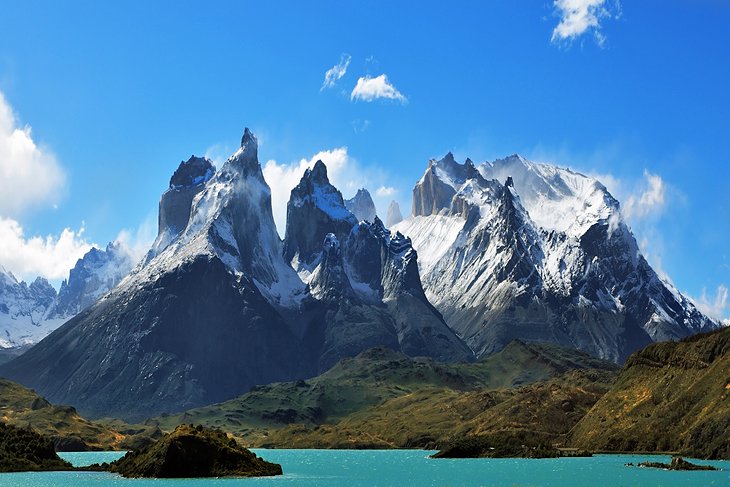
The breathtaking Torres del Paine National Park is quickly becoming one of the most sought-after tourism destinations in Chile as well as one of the most significant natural sites in all of Chile. This breathtakingly gorgeous region can be found in southern Patagonia, more than 100 kilometers north of the city of Puerto Natales. It is characterized by its abundance of lakes and rivers, as well as its mountains and glaciers.
The Cordillera del Paine is the most significant portion of the park because it serves as a transition zone between the steppes of Patagonia and the subpolar forests that are found further north. The three 2,850-meter-tall granite peaks of the Paine Massif, which dominate this already beautiful environment, are perhaps the most remarkable of its many wonderful features. This breathtaking panorama is found in the Paine Massif.
One of the most popular things to do in the park is go hiking on one of its many well-marked routes. Many of these trails feature overnight shelters called refugios that are stocked with the essentials for longer excursions that go around the mountains. If you want to do more than just a day's worth of hiking, it is strongly advised that you hire experienced guides, and in certain places it is even required.
The W Trek is a five-day adventure that is considered to be one of the best hikes in Patagonia. It is offered as one of the best guided tours of the area. The impressive Glacier Grey and the Paine Grande mountains are just two of the sights that can be seen along this 71-kilometer path that winds across Patagonia.
2. Valle de la Luna and the Atacama Desert
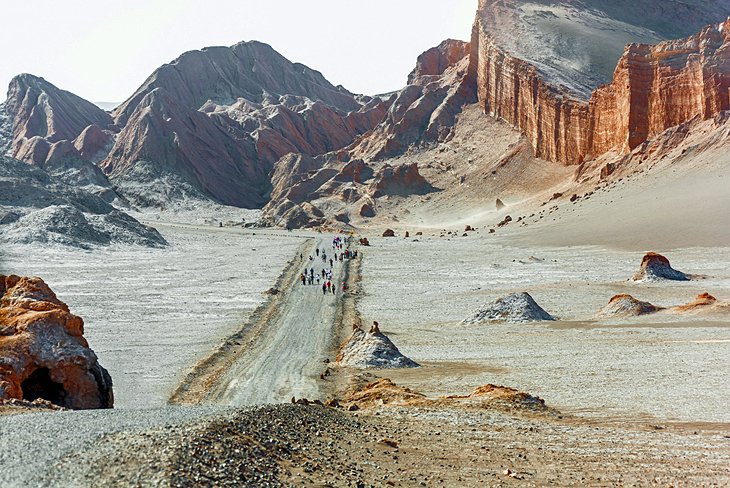
The Valle de la Luna, whose name literally translates to "Valley of the Moon," can be found in the northern part of Chile, approximately 13 kilometers west of San Pedro de Atacama and close to the border with Bolivia. You can get there by using one of the well-marked bike trails, one of the tour buses, or by renting a car and driving it yourself.
This harsh and unfriendly seeming terrain in the middle of the Atacama Desert draws a lot of tourists due to its uncanny resemblance to the surface of the moon. This effect is generated by the wind and water eroding the sand and stone elements of the landscape over the course of countless millennia, so it seems like the moon's surface. However, despite its distant location, this amazingly magnificent terrain has been able to support life for hundreds of years, including human life as well as the existence of a large number of different species of flora and wildlife.
It is one of the driest areas on the planet, so it should come as no surprise that the dry lake beds there are dazzlingly white due to the accumulated salt, and they are prone to forming remarkable natural saline outcrops. These dry lake beds are one of its most interesting features.
Other prominent aspects of the Atacama Desert include the region's many caverns, some of which retain evidence of pictographs produced by early man and which were found to have preserved some of the world's oldest mummies as a result of the area's aridity. Other aspects of the Atacama Desert include the Atacama Sand Dunes, which are among the driest places on Earth. The Chinchorro mummies are currently on display at the archaeological museum in San Miguel de Azapa. These are the most well-known of all of these artifacts.
The sinkhole at Laguna Cejar, which is known for its turquoise water, is another point of attraction.
3. The national park that encompasses both Easter Island and Rapa Nui
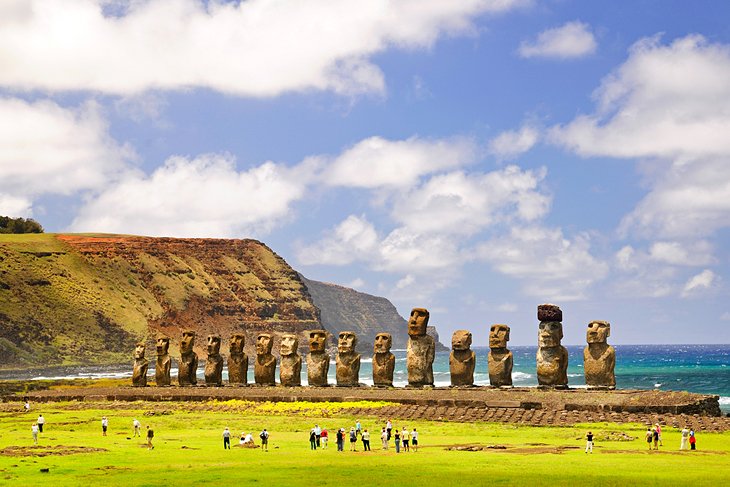
Easter Island was given its name by a Dutch explorer who first laid eyes on the island on Easter Sunday and gave it to the Polynesians who had been living there for thousands of years before Europeans arrived in 1722. Easter Island is a lovely yet remote island that was first sighted by Europeans in 1722. Even though it is more than 3,500 kilometers distant from the mainland of Chile, this intriguing island is still the most famous tourist destination in the country due to the extraordinary stone carvings that are located on it.
There are a total of 887 of these statues, which are known as Moai and were made by the early Rapa Nui inhabitants on the island. The majority of these statues are currently protected by Rapa Nui National Park (the island itself has been designated a UNESCO World Heritage Site). The most remarkable collection can be found at Ahu Tongariki, where 15 of the Moai statues have been re-erected on the island's largest Moai platform, also known as a "ahu."
Anakena is regarded as one of the top beaches in the country and can be found on the island of Rapa Nui. This breathtakingly gorgeous although rather brief length of white coral beach is the ideal place to take a breather from the hiking.
The numerous "hare paenga" ruins that can be discovered in close proximity to ahu sites are also very interesting. These ruins consist of stones that were originally the foundation of boat-shaped dwellings. In Hanga Roa, the island's largest village, there is also the Father Sebastian Englert Anthropological Museum, which is noteworthy for its exhibits relating to the history of the Polynesian islanders and their traditions. This museum is among the other highlights of the island.
Important Tip: Traveling to Easter Island should ideally be included as part of a trip to Chile, as there are frequent flights departing either from Santiago or Tahiti. The flight timings are roughly five hours, so plan on staying for at least a couple of days at the very least.
4. Santiago: Chile's Cultural Capital
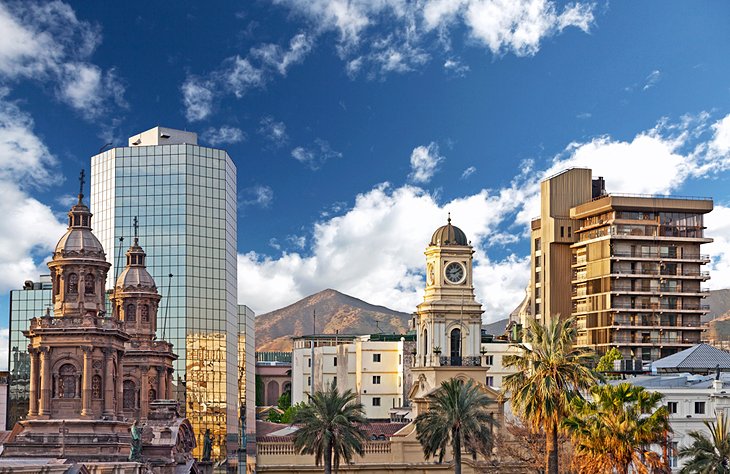
Santiago is not only Chile's financial and business capital, but it also acts as the country's cultural and entertainment center. Santiago is the largest city in Chile. As a consequence of this, it is home to an infinite number of entertaining things to do, such as going to the city's greatest museums and galleries, as well as good options for shopping, dining, and lodging.
Because of its convenient location in the middle of the country as well as its status as the primary transportation hub, Santiago is the place where the majority of tourists begin their trips in Chile before continuing on to the Andes or to other regions of exceptional natural beauty such as Easter Island. However, the most astute tourists will schedule some sightseeing time in Santiago during their trip to Chile so they can familiarize themselves with the city.
The city was established in 1541 and has areas of interest such as the Centro Cultural Palacio La Moneda, a cultural center that is state-of-the-art and occupies part of the spectacular Palacio de la Moneda, and the Chilean National Museum of Fine Arts (Museo Nacional de Bellas Artes). Both of these museums are located in the relatively crowd-free Centro Cultural Palacio La Moneda. It was established in the 1880s, and its primary concentration is on the artwork of Chilean artists. It houses a substantial permanent collection that includes paintings, sculptures, and photographs.
Among the top tourist attractions in Chile are the world's driest desert, spectacular scenery of glaciers and fjords, and the many volcanoes along the Pacific “ring of fire”. (📷 : @chile |📍: Chile)
— Flyhoop Travels (@FlyhoopTravels) January 12, 2021
Deal Alert! Paris, France - Santiago, Chile. €396. RT, including all Taxes. pic.twitter.com/3fXZj5L4JH
Other attractions that should not be missed are the superb Museum of Pre-Columbian Art (Museo Chileno de Arte Precolombino), which features collections connected to the native people of the country, and the Museum of Memory and Human Rights (Museo de la Memoria y los Derechos Humanos). Both of these museums are located in Santiago. The latter pays tribute to those who lost their lives as a result of Pinochet's rule.
A ride on the aerial tramway to the top of San Cristóbal Hill, with its breathtaking panoramas of this friendly and welcoming city, is sure to be one of the highlights of any trip to Santiago. There are also a few notable sights here, such as an observatory, a statue of the Blessed Virgin Mary that is 22 meters tall, and an amphitheater.
Be sure to also spend time enjoying Santiago Metropolitan Park (Parque Metropolitano de Santiago), a big urban green space. In this area, you'll discover a funicular railway in addition to the Chilean National Zoo and a botanical park.
5. The District of the Lakes in Chile
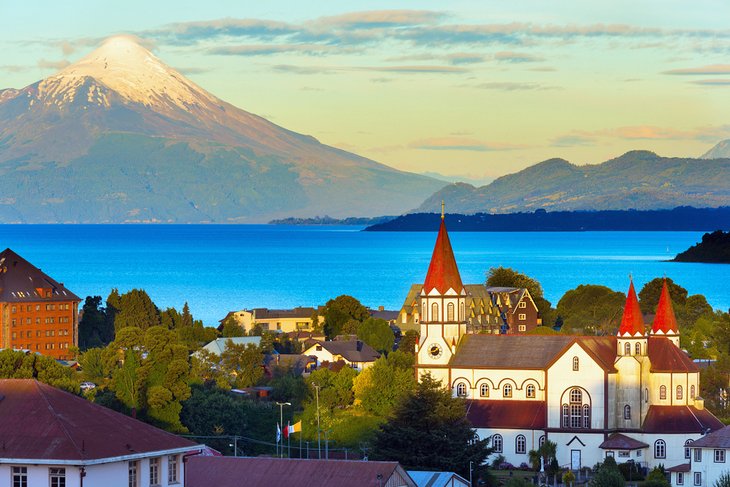
The Chilean Lake District, also known as the Zona Sur, is an area that should definitely be explored. It stretches for more than 330 kilometers from Temuco to Puerto Montt and is reminiscent of the alpine regions of Europe. This gorgeous region of the Andean foothills is very similar to its alpine relative in that it has fertile agriculture at the base of its many snow-capped volcanoes, and it is surrounded by dense woods and the kind of deep lakes that make aficionados of water sports salivate.
Additionally, this is not the end of the relationship to Europe. Farmers from Switzerland, Austria, and Germany settled in the region after the indigenous Mapuche population was relocated against their will. These newcomers brought with them aspects of their own culture, which can be observed even today in the architecture of cities like Osorno and Valdivia, as well as in the region's traditions and celebrations.
Hiking and biking are just two of the many activities that can be enjoyed in the Lake District of Chile. Other great things to do in the area include climbing volcanoes, going white water rafting, kayaking, canoeing, horseback riding, and skiing in the wintertime. Traveling to the area by car is likewise an exceedingly common activity.
6. the cape of Horn
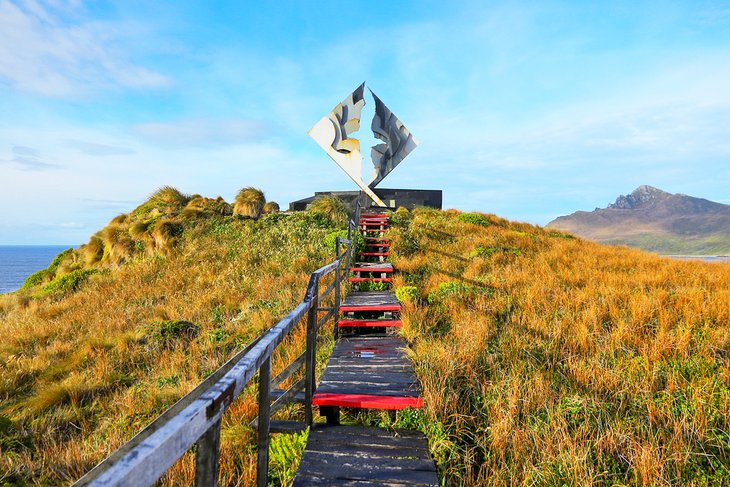
If you are a traveler, Cape Horn is sometimes compared to the Holy Grail, and if you are a yachting type, it is often compared to Mount Everest. If you are able to make it here, it is well worth the effort, even if it is just for the bragging rights.
Because of its isolation, perilous coastline, and the strong waves that are typical in this region, Cape Horn has been renowned as a sailor's graveyard for generations. This is because it is the last stop before reaching Antarctica and it is the world's southernmost point. Although its importance as a trade route has decreased since the construction of the Panama Canal, the Panama Canal has led to an increase in the route's popularity among serious sailors, and it now plays host to a number of exciting races.
It is still possible for the rest of us to go there if we make the appropriate preparations. However, getting to Cape Horn is difficult and requires one of only a few available methods (unless, of course, you have your own yacht). The use of helicopter transportation from the municipality of Puerto Toro in Chile is becoming an increasingly well-liked alternative. If you plan on going on an expedition that lasts for the whole day and costs a lot of money, you should probably look for other people to go with you. You can also reach here by chartering a sailboat, but it will take a long time and the seas will likely be bad.
It's possible that cruise ships are the most advantageous choice. There are a lot of cruises that go around Cape Horn on their way to Antarctica, and some of them will stop here for an hour if the conditions are favorable. Because passengers disembark on inflatable boats, this leg of the journey is also subject to periods of turbulence.
Once passengers are onshore, they can make the relatively easy ascent to the top of the cliff to reach the Cape Horn Memorial Sculpture, which is possibly the best location in the world for tourists to take selfies. You have arrived to the bottom of the world, and this spectacular monument and its incredible views are here to welcome you.
7. Valparaíso

It is approximately 112 kilometers to the northwest of Santiago in the direction of Valparaiso, which is Chile's third largest city and makes for a wonderful day trip. Valparaiso is tucked between the ocean and the coastal mountain range. The city is well known for its many old cobblestone streets and distinctive architecture, in addition to its attractive harbor and beaches, and it provides a great lot of opportunities for enjoyable activities.
The maritime history of the country is the subject of numerous tourist attractions, one of which is the Lord Cochrane's Museum (Museo Lord Cochrane), which is housed in a charming old colonial residence that was constructed in 1842. The magnificent Naval and Maritime Museum (Museo Naval Y Maritimo) is another must-see tourist destination that should not be missed. Its exhibitions deal with the War of the Pacific of 1879 between Chile and allied Peru and Bolivia, with a particular emphasis on the contributions of Chile's war heroes.
The Ironclad Huáscar is an attraction that is connected to this topic and can be found in the Port of Talcahuano, which is around 600 kilometers south of Santiago. This historically significant vessel, which was originally constructed in Britain in 1865 and is one of the few such battleships of her sort to still remain in existence, makes its home in Talcahuano's picturesque harbor, which is also the home of Chile's navy.
8. The National Park of Lauca
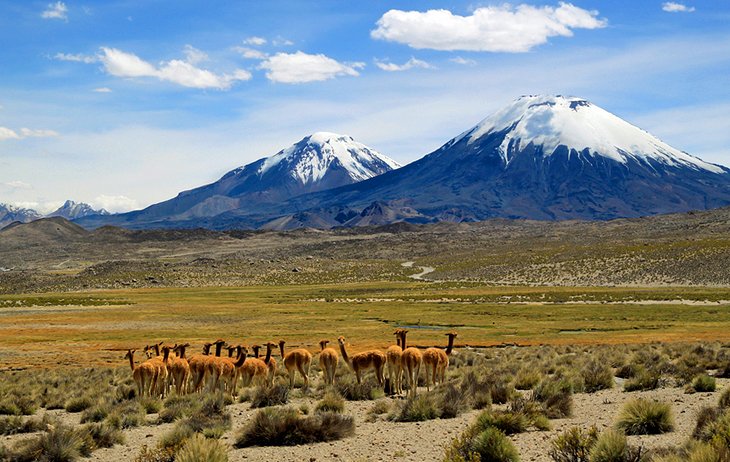
Lauca National Park (Parque Nacional Lauca) is located in the extreme north of Chile, approximately 140 kilometers east of the city of Arica. It has a total size of 1,300 square kilometers and is primarily made up of high plains and mountain ranges, with a significant number of the mountain ranges' peaks being huge volcanoes.
One of the highlights is wandering among the area's many pristine mountain lakes, the most notable of which are Cotacotani and Chungara. These lakes reflect the breathtaking nature around them to magnificent effect. In addition, the park is home to a number of significant archaeological sites, as well as remnants of the first European inhabitants, who left their stamp in the form of numerous beautiful ancient colonial churches and houses in the surrounding area.
More than 140 kinds of birds have been spotted there, including Andean geese, crested ducks, Chilean flamingos, and the enormous Andean condor, making it a popular destination for people who enjoy birdwatching. Another stunning location in the Araucana Region of the Andes, Conguillo National Park (Parque Nacional Conguillo) is a favorite destination for people who enjoy spending time in the great outdoors.
9. Pumalín Park
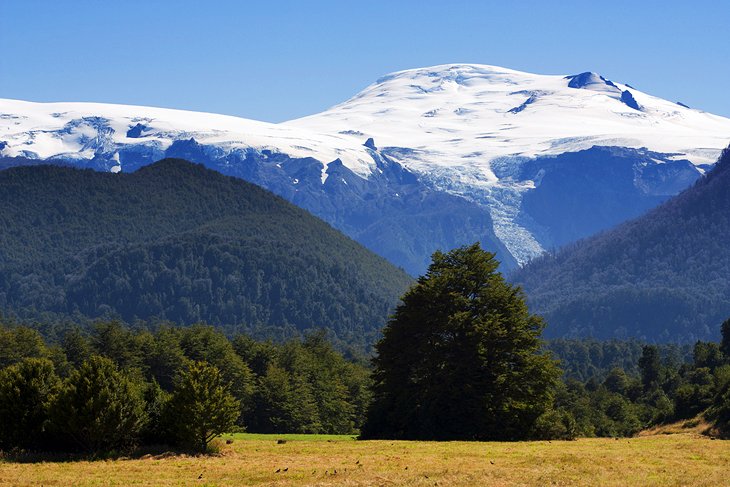
Despite the fact that it wasn't designated as a nature preserve until 2005, Pumalin Park has quickly become one of the most significant and well-visited protected places in Chile. The region encompasses a wide area of more than 988,000 acres and stretches from the Andes to the Pacific Ocean. It is renowned for having some of the country's most unspoiled coastline and forests, as well as the fact that nearly none of its land has been altered by human activities.
in addition to preserving the region's abundant flora and wildlife, which includes the Alerce tree, which is the oldest tree species in the world, the park is also very easy for tourists to enter and offers one of the most impressive wilderness adventures in the United States. The Conservation Land Trust, which is situated in the United States, owns and manages the property.
Pumalin Park is a delight to explore thanks to its large network of trails, campgrounds, and visitor amenities. This is true whether one is interested in going on a little nature stroll or participating in a more full ecotourism excursion. It is common for them to consist of a night spent in a primitive cabin-style accommodation with a view of one of the most beautiful and untouched settings in the world.
10. Los Pinguinos Natural Monument
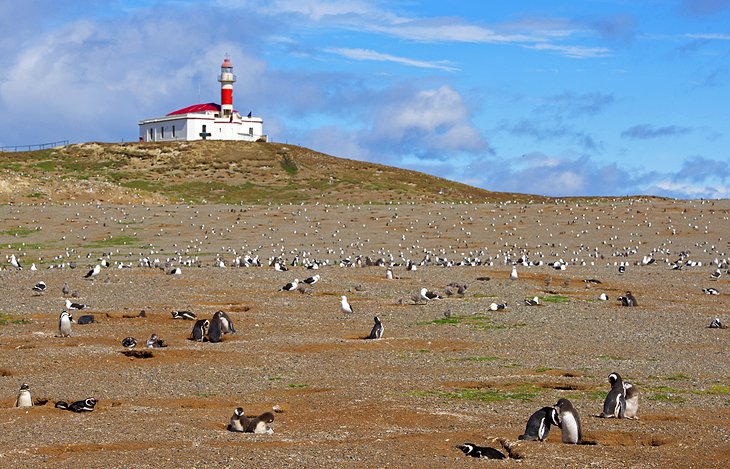
It is possible to view more of Chile's significant conservation efforts in the country's many natural monuments, in addition to the country's national parks. The Los Pinguinos Natural Monument (Monumento natural Los Pinguinos), which is located about 35 kilometers to the northeast of the city of Punta Arenas at the southern tip of the island and incorporates the stunning Magdalena and Marta Islands, is one of the most well-known.
The monument is home to one of the greatest penguin colonies in Chile and gets its name from the Spanish word for penguins, which is "pinguinos." This particular colony is made up of approximately 60,000 breeding pairs of Magellanic penguins. Large populations of seals and sea lions call these islands home, and the only way to visit them is via a trip that takes place aboard a boat.
The San Francisco Glacier and the 4,674-meter-tall Cerro El Morado mountain are both located in El Morado, which is another one of the great natural monuments in Chile. El Morado is easily accessible by car from Santiago.
11: The Saltpeter Works of Humberstone and Santa Laura
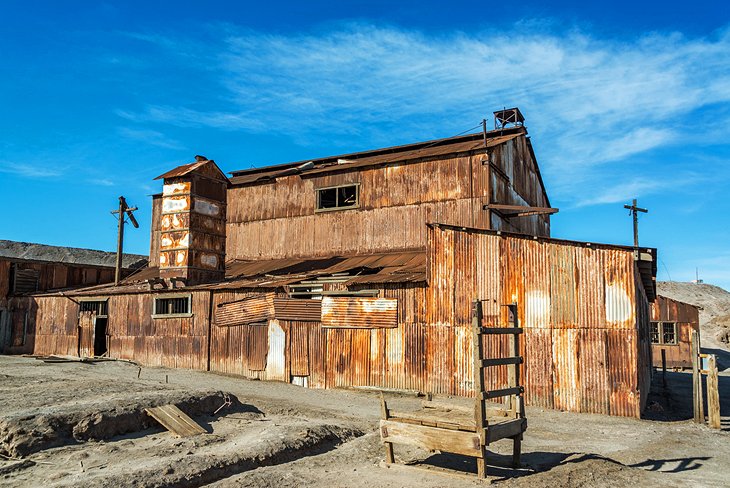
This interesting ghost town was once home to a thriving society and is now located in the desolate Pampa Desert near the northern coastal city of Iquique. In 2005, it was designated as a UNESCO World Heritage Site.
At the Humberstone and Santa Laura Saltpeter Works (Salitreras Humberstone y Santa Laura), also known as the Humberstone and Santa Laura Saltpeter Mines, thousands of employees from Chile, Bolivia, and Peru worked in a dangerous environment that encompassed approximately 200 saltpeter mines for more than 60 years beginning around the year 1880. In the course of their job, these laborers developed a unique culture and way of life, both of which have been maintained in this location.
Although it has been abandoned since 1960, the site provides a fascinating view into the difficult conditions that these "pampinos" were forced to endure. Many of the site's main structures are still standing and may be examined, which makes the site particularly interesting. Given the area's isolation and harsh environment, it is highly suggested that visitors hire professional guides.
12. Chiloé Island and Chiloé National Park
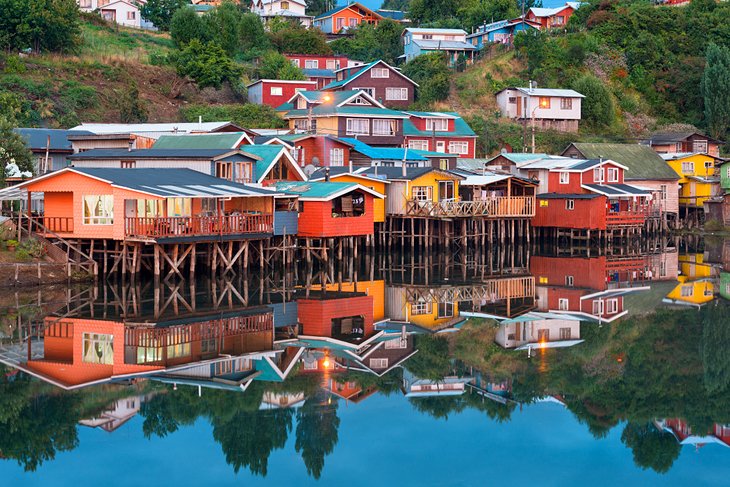
It is highly recommended that you include Chiloé National Park in your trip plans. This park can be found on Chiloé Island, which is the second largest island in the country. Chiloé Island is certainly one of a kind, despite the fact that the majority of Chile's most breathtaking landscapes are more rough than the island in question.
It is a joy to explore, and in some spots it has a landscape that is reminiscent of the rural topography one could find in certain countries in Europe (Germany comes to mind right away).
In addition to the several old distinctive wooden churches that can be seen on the island, which are relics of the communities that were created by Jesuit priests who landed here in the 1600s, you'll also come across a large number of charming and colorful old dwellings. They are known as "palafitos," and in some locations they can be found nestled along the shoreline. These structures are elevated above the water on stilts. Visit some of the island's many colorfully painted historic churches, which are also a popular tourist attraction.
In recent years, Chiloé National Park has seen an increase in the number of visitors seeking to experience its natural beauty. The opportunity to watch species such as blue whales and dolphins (sightseeing trips are offered), as well as the enormous penguin breeding grounds on the neighboring Islotes de Puihuil Natural Monument, is a highlight of a visit to this area of remarkable natural beauty. Sea kayaking, hiking, and other forms of ecotourism are among the available activities.
related link: How I Arranged Everything for My Vacation to Jamaica Carnival, as well as Important Information Regarding This Caribbean Event
13. Valle Nevado
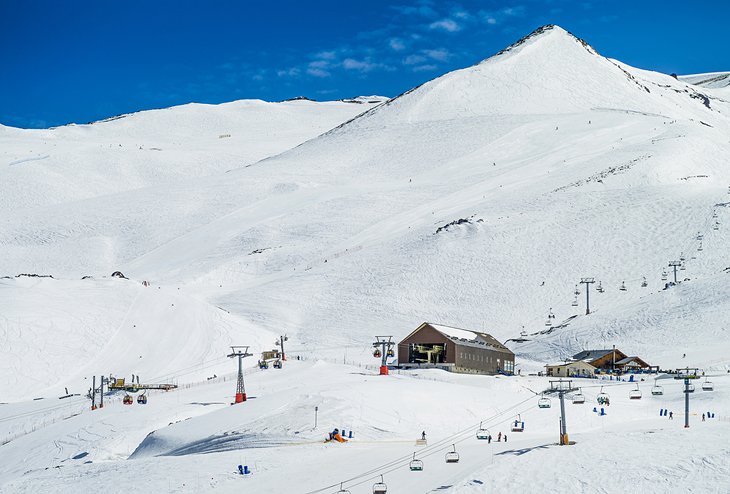
Skiers are now well aware of the fact that Chile is home to some of the best skiing in the world, despite the fact that this was once a closely guarded secret. The Valle Nevado (Snowy Valley) resort zone in the El Plomo foothills of the Andes is well-served by public transit from the country's capital of Santiago, which is located just 46 kilometers west of the slopes. This makes it by far the most popular ski destination in South America. The ski resort first opened its doors in 1988 and has experienced significant expansion ever since then. It now spans an enormous land area.
Because of its high height 3,000 meters above sea level, it is known for having skies that are typically clear and excellent snow. The ski resort offers 37 different runs and 11 different lifts, and it is open for skiing on 112 days per year. Families with children just learning to ski or snowboard are just as likely to find themselves there as seasoned athletes.
The resort has a total of eight restaurants in addition to its three hotels. Additionally, guests have the option of renting one of a number of different condos or chalets, which are appropriate for both short and long-term visits. In addition to a ski shop and a tour company that offers heli-skiing adventures, the property features a snow school where guests may learn how to snow ski. Other major Chilean ski slopes close to Santiago are La Parva and El Colorado.
14. The Natural Landmark of the Mylodon Cave
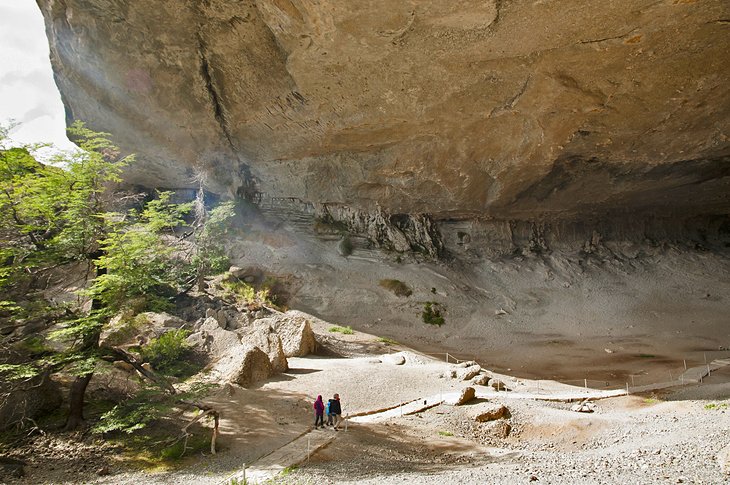
The Mylodon Cave Natural Monument, also known as El Monumento Natural Cueva del Milodón, can be found in the Patagonia region of Chile, just a short distance away from Puerto Natales. This location draws a lot of interest from tourists as well as people who are interested in nature.
The Devil's Chair (Silla del Diablo), a formidable rock formation, is one of the highlights of this interesting natural marvel, which is part of the famed End of the World scenic route. Also among the highlights of this natural wonder are a number of caverns that are easy to enter and are placed around the intimidating rock formation.
The main cave, which is also known as the Milodon Cave, was the location in which, in 1895, the well-preserved remains of a prehistoric Mylodon were discovered. At the site where the discovery was made, there is a large statue of this long-dead species. The cave also included the remains of numerous extinct animals and even human bones.
The depth of this spectacular cave is somewhere about 200 meters, and it's a lot of fun to explore. If you have the time, walk the trail that is clearly indicated and leads to the top of the cave. From there, you will have breathtaking views over the Eberhard fjord, which is located nearby.
Exploring the park's many other hiking paths, which feature a lot of elevated portions at tree height that are enjoyable to stroll, is another one of the park's many entertaining things to do.
15. Cochamó Valley
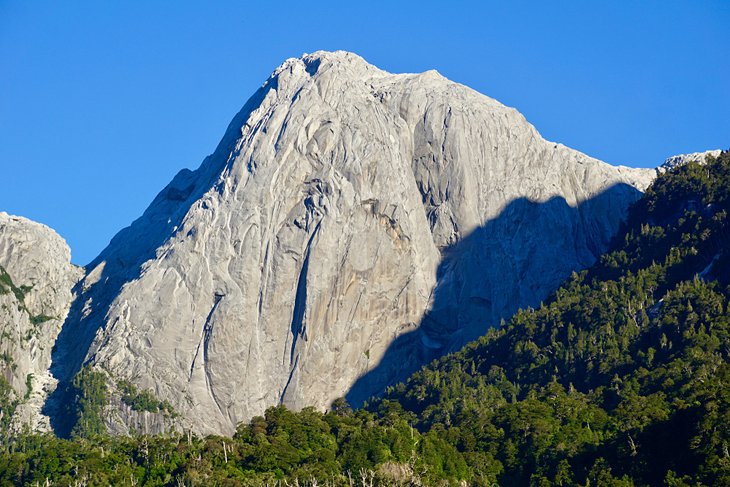
The stunning landscape of the Cochamó Valley in Chile, also known as the "Yosemite of Chile," is a wonderful part of the country to travel through and discover. It is a place that, like Yosemite, has become immensely famous with hikers and rock climbers. The latter are drawn here for the opportunity to tackle its many 1,000-meter-plus granite walls. The region is located in the Los Lagos region of the Andes and was called after the Cochamó river.
For their part, hikers have a wide range of paths to select from, each of which varies in degree of difficulty and, in the majority of cases, leads hikers directly to popular points of interest. These include the region's plethora of breathtaking waterfalls, which are scattered throughout the area.
It is highly recommended that you travel the ten-kilometer-long "Cowboy Trail," which got its name from its use as a cattle track for the better part of a century (it was also used by the notorious bank robbers Butch Cassidy and the Sundance Kid after they fled the United States). This is a delightful trip that is six hours long and starts in the village of Cochamó. It leads to La Junta, a rocky outpost with a lot of campsites if you choose to spend the night there.
People are drawn here not just because of the wide variety of flora and fauna, but also because of the excellent fly fishing.
16. Vicente Pérez Rosales National Park
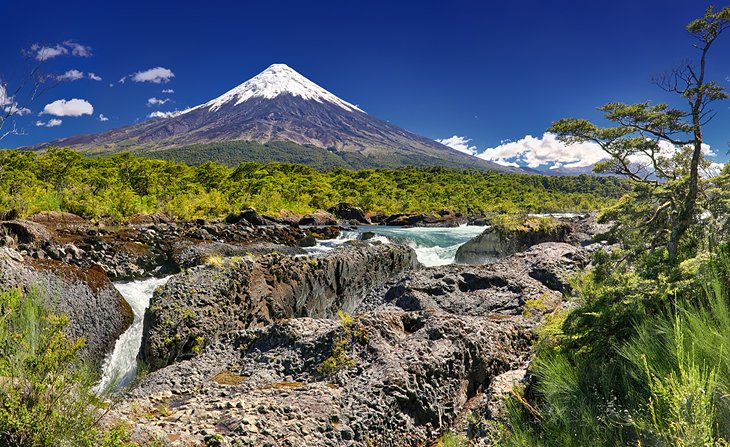
The Vicente Pérez Rosales National Park (Parque Nacional Vicente Pérez Rosales), which was the first of the country's many national parks when it was established in 1926, can be found in the middle of the Chilean Lake District and offers the ideal opportunity to at least catch a glimpse of this breathtaking area. The park was named after the country's first president, Vicente Pérez Rosales.
The breathtaking Petrohué Falls, also known as Saltos del Petrohué, are the most popular tourist destination in this region and are located in close proximity to the city of Puerto Montt. During the wet season, this spectacular view of the Petrohué River tumbling down a volcanic rock chute to Todos los Santos Lake is at its most breathtaking. After traveling down the waterfalls and rapids, the water finally reaches the crystal clear lake, which is a favorite location for fishing and watching birds.
In addition to that, the region is well-known for its numerous species of fauna, including as pumas and deer, as well as its thermal springs. When you combine this picture-perfect site with a backdrop of snow-capped volcanoes, you have the ideal spot to take that souvenir selfie to remember your trip to Chile.

